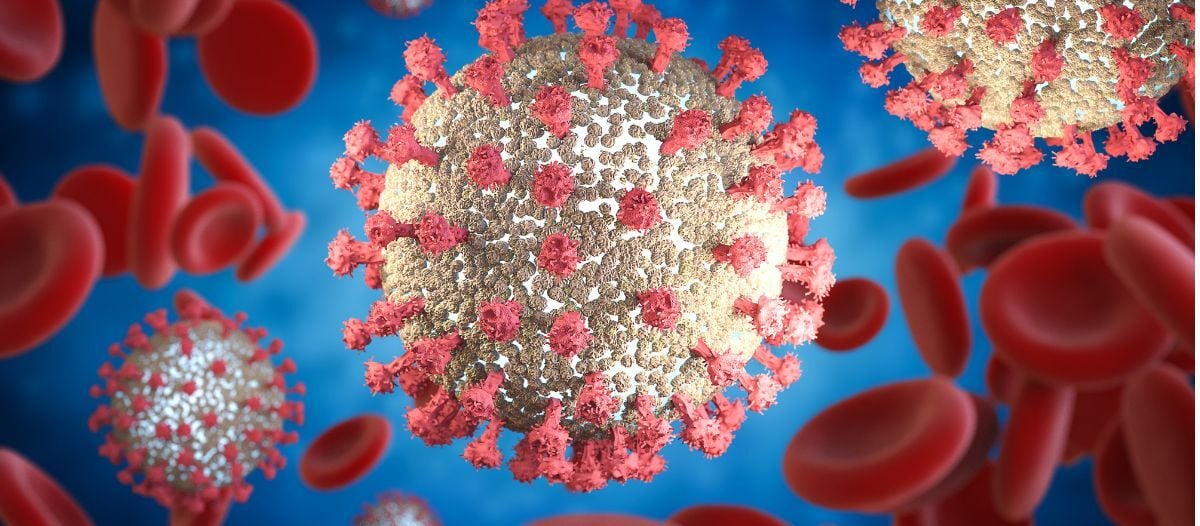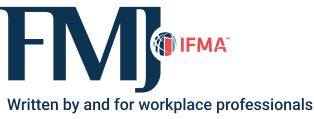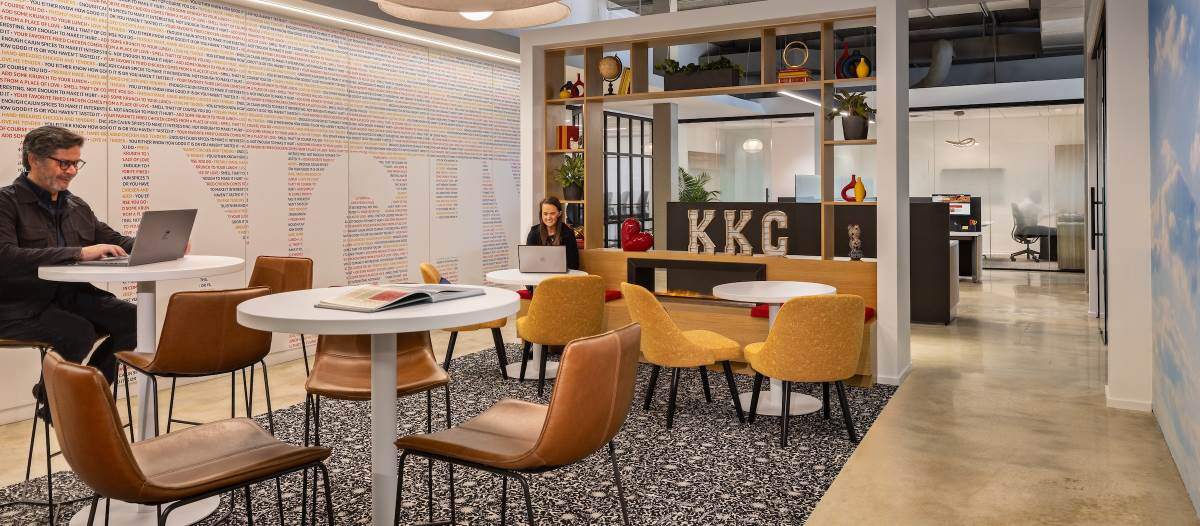Infection Prevention
Sustainable practices in FM

With nearly six million U.S. commercial and industrial buildings under the stewardship of facility managers, sustainable practices are crucial to environmental preservation, as well as preserving the health of properties, profits and people. Over the years, the definition of sustainable has evolved and expanded so that it applies to almost every part of FM. Perceptions of sustainability were often limited to corporate citizenship, conservation and pollution reduction. However, in reality, there are health and safety aspects to environmental sustainability that impact employees, building occupants and facility stability as well. Moreover, since the advent of COVID-19, a dynamic shift in focus has placed significant emphasis on infection prevention, hence a greater need for facilities to implement more sustainable practices.
FMs are well-suited for making the decisions and changes necessary to achieve optimal sustainability. They often have broad capabilities that encompass leadership skills and engineering expertise. An FM’s duties are widely diverse, ranging from controlling rising costs and raising workforce productivity, to building maintenance and maintaining the safety of occupants. Facility health is one of the most critical responsibilities and can have far-reaching consequences if not managed as efficiently and effectively as possible.
Most FM professionals face similar challenges in terms of time and budget constraints and the nearly constant turnover of housekeeping staff. Lately, these issues have been amplified by unprecedented labor and supply chain shortages. Yet, FMs are held accountable for improvements in building health and a lower carbon footprint, on top of increasing profitability and productivity. A trend points to optimized cleaning programs and more sustainable infection prevention practices as solutions to many operational challenges, while simultaneously enhancing the health of people and the planet.
Sustaining continuous improvement
The first step toward achieving healthier facilities and sustainable infection prevention practices is to gain insight into existing processes and performance. Facility-wide surveillance is essential to identifying all the risks, gaps and inefficiencies that need to be addressed. The key to continuous improvement is conducting continual site audits and developing adaptive strategies with specific action steps. Assessments arm FMs with the data they need to make more informed decisions for reducing viral transmission and help guide the direction of sustainability plans.
Since the pandemic, routine housekeeping is no longer the status quo. Cleaning protocols have grown more detailed and increasingly complex. Consequently, training has become a critical component in the sustainability equation. Continuous improvement in infection prevention processes hinges upon continuing education. Program success necessitates comprehensive training programs be tailored to the facility’s specific environment and kept current based on the latest risk assessment data and industry guidelines.
The most effective training programs are designed to address the three primary areas in infection prevention: efficiency, efficacy and safety. Learnings should extend beyond basic housekeeping to include procedures for enhanced disinfection, cross-contamination mitigation and more effective cleaning methods, as well as incorporate application considerations, safety protocols and environmental concerns. In addition to reinforcing cleaning competencies, perennial education also helps achieve higher levels of compliance. Adherence to compliance standards is imperative for sustaining health and safety and vital to the future success of sustainable infection prevention practices.
Training is not just essential for existing staff but also when onboarding new team members and should be refreshed on a regular basis. However, for sustainability programs to thrive over the long term, every stakeholder in the ecosystem needs to be educated. Sustainable change initiatives rely on engagement from multidisciplinary team members on a facility-wide scale: The more diverse the team, the greater the likelihood of long-term sustainment.
Sustaining facility safety
Establishing a true infection prevention program to protect people from potential hazards is an FM’s priority, which includes guarding against risks of exposure. Occupational safety organizations such as OSHA and NIOSH have published numerous studies showing that the use of toxic cleaning chemicals often has negative health effects. They stress the importance of referencing safety data sheets to ensure sanitizers and disinfectants are safe for frontline workers and building occupants.
Unfortunately, most traditional cleaning products contain hazardous ingredients or volatile organic compounds (VOCs), which negate sustainability efforts and put health at risk. According to the Environmental Protection Agency (EPA), VOC concentrates can be up to 10 times higher indoors than outdoors. Some cleaning and disinfecting products are known to cause respiratory issues and cancers. Excessive use of these products can create severe liabilities for facilities.
Sustaining facility safety is contingent upon using environmentally preferable cleaning and disinfection products, which naturally aligns with the implementation of safer, more sustainable infection prevention practices. Low toxicity and biodegradability are two of the most important chemical properties. However, profiles should also have optimal safety ratings that include triple zero HMIS, neutral pH and the lowest EPA category for inhalation toxicity.
Efficacy is the other side of safety. The term broad-spectrum not only refers to a chemistry’s versatility but its efficacy against a wide range of bacteria, viruses and fungi. Disinfectants should be EPA registered against the most prevalent pathogens, such as SARS-CoV-2 (List N), Norovirus (List G) and C. auris (List P), in addition to multidrug-resistant organisms (MDROs) like C. diff (List K), MRSA and VRE (List H.) Products should be able to inactivate these pathogens in four minutes or less. For disinfectants to achieve maximum efficacy, they must also have the highest level 2c Emerging Pathogen Claim (EPC) against the hardest-to-kill, small, non-enveloped viruses. Because biofilm harbors many communicable diseases, an EPA-registered biofilm kill claim is preferred. Nonetheless, though superior biocidal performance is critical, it is equally critical that cleaning chemicals are not harmful to health or the environment.
Occasionally, sustainability and safety goals may appear to contradict each other. For instance, facilities often reuse cleaning cloths to reduce waste. In doing so, they might inadvertently exacerbate the spread of infections by creating cross-contamination. There is a misconception that disposable wipes are not a sustainable option when the opposite is true. Dry-wipe systems can provide more accurate dilution to prevent disinfectant overuse. When combined with biodegradable chemistries and recyclable containers, disposable wipes are a highly sustainable solution that can also mitigate cross-contamination. FMs need to strike a balance between safety and sustainability. It may require wading through mountains of information to arrive at strategies that will raise sustainability without sacrificing safety.
Standardizing for sustainability
Typically, most facilities use as many as 10 different chemicals to accomplish each task throughout the process, including disinfecting high-touch surfaces, cleaning floors, windows, restrooms, sanitizing food preparation areas and so on. Every product comes with its own usage guides, dwell times and personal protective equipment. This approach can not only increase the potential for errors but can negatively impact productivity and increase operating costs. The sheer volume of product packaging is a primary culprit for environmental waste.
As mentioned, there is an emerging trend toward optimized cleaning programs and more sustainable infection prevention practices. Optimization is centered around standardization to consolidate the number of chemicals facilities use. Standardization is achieved by exchanging single-use cleaning and disinfecting products with broad-spectrum chemistries that serve many different purposes. This approach has many advantages, not the least of which is higher levels of safety. It makes sense that fewer protocols will lead to fewer failure points, and fewer cleaning chemicals will mean less risk for exposure. In addition, if harsh chemistries are replaced by more natural alternatives that are equally or more effective, facilities will be able to sustain longer-term health benefits.
Standardization yields significant financial benefits. Consolidation correlates to savings by reducing chemical consumption, product costs and expiration losses. It can also solve many supply chain challenges. Where efficiency is concerned, standardization helps streamline processes, minimize resource waste and improve workflows.
Aside from chemicals, there are also cleaning technologies that support more sustainable infection prevention practices. For example, electrostatic sprayers have disrupted the cleaning industry in the last few years by enabling faster, more effective surface disinfection while using 65 percent less chemicals to cover more area than conventional methods in a fraction of the time. Because electrostatic sprayers are a touchless technology, they also help prevent cross-contamination.
Sustainable FM
Although FMs oversee facility performance, sustaining health and safety is a responsibility everyone shares. The success of infection prevention practices depends on collaboration between team members. In turn, programs founded upon sustainable practices can create more successful facilities. Sustainability and resiliency go hand-in-hand. Proactive and sustainable infection prevention can result in benefits that are transferable to all facets of a facility, making it stronger and more resilient for the future.

Brian Spada is area vice president mid-Atlantic for EvaClean Infection Prevention Solutions. His background is in health, biotech and infection prevention, with extensive expertise in biology and science. Spada has developed training programs at major health systems throughout the U.S., focusing on process improvement and reductions in health-care-associated Infections.
Read more on Occupancy & Human Factors and Sustainability or related topics Occupant Health and Sustainable Facility
Explore All FMJ Topics









